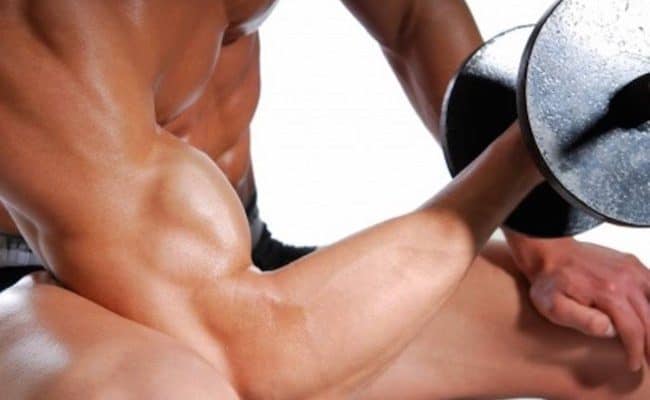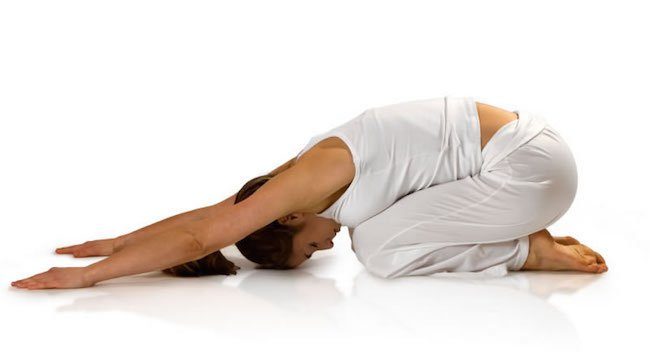
There are so many claims out there when it comes to the best ways to exercise and lose weight, however, unfortunately few are based on scientific research and evidence. In fact, many of the common tips we see on the internet and in the news are completely contradictory to what research tells us. Yet, as it is difficult to know what to believe, we still follow the advice we hear from these sources. Here are some of the most common myths when it comes to fitness and a breakdown of the truth behind them.
1. It is possible to reduce weight on certain parts of the body
Unfortunately, the concept of ‘spot training’, or doing certain exercises to reduce weight on an isolated part of the body is just not possible. While we would all like to lose a little from our hips or bottom, the fact is when we do lose weight we cannot choose where we lose it from. Different people lose and gain weight more easily in different areas, so even if we target our training to focus on one area, there is no guarantee we will see any change.
The only way to reduce fat on certain parts of the body, is to lose weight overall and continue until you notice the results on the part you want to shrink. Be aware though that for some people this may never happen. In fact, it is possible to be underweight and too thin in the rest of your body, whilst still storing fat in some areas, for example the butt. If this is how you are programmed genetically, unfortunately there is little you can do about it.
It is possible however, to improve the appearance of certain areas with a varied workout that combines toning activities and cardio for the best weight loss. Although you cannot choose to lose weight in a certain area, focusing on toning exercises for the problem area will show as you gradually lose body weight.
2. Lifting weights will bulk you up
This is of particular concern for females, who sometimes avoid lifting weights for fear it will make them look unattractively bulky. In the majority of cases however, this is unlikely to occur, as women are lacking sufficient levels of testosterone to be at risk of bulking up like a man.
In fact, strength training including lifting weights can actually aid weight loss as muscle is more metabolically active than fat, meaning your resting metabolism is much higher and you burn more calories even when at rest if you have more muscle mass. Muscle also takes up less room than fat and may therefore help to drop a dress size or two. Not only this, but strength training has also been shown to decrease risk of osteoporosis by strengthening bones.
3. Crunches will give you abs of steel
Many of us have dedicated time and effort to thousands of crunches and other ab exercises in the hope of sporting a fantastically toned stomach the next time we don a bikini. Unfortunately, you can crunch away all day and still have an alarming spare tyre where your flat toned abs should be.
While doing these types of exercises may well strengthen and tone your stomach muscles, they do not burn fat. This means that although that six pack may be lurking somewhere beneath the surface, you will never actually see it unless you lose the layer of fat covering it. The best way to do this is to follow a varied workout, made up of cardio and strengthening exercises and follow a healthy diet for weight loss.
4. Aerobics can boost your resting metabolic rate
This myth could be considered a half truth, as in fact your metabolic rate is slightly higher after completing an aerobic workout. Unfortunately, however, not so much higher that you can go and indulge in your favourite bar of chocolate without seeing any effects. The increase in metabolic rate equates to about 20 calories per day, and is therefore practically insignificant in terms of weight loss.
Strength training produces a slightly greater rise in metabolic rate, but again it is not really significant on a weight loss scale. To increase your metabolic rate, the best option is to increase your lean muscle mass as this burns more calories than fat.
5. If you are not going flat out you may as well go home
Many people are under the impression that to have any positive effects you need to be sweating in out at a high intensity almost every day, however research goes against this theory, with improvements in health being seen with low intensity exercise such as walking and even gardening.
Even ten minutes a day has been associated with reduced risk of heart disease and stroke, so get moving even if it’s only for a short time. Every little bit helps to burn calories and improve your fitness, so even if you start small you are still doing your body some good and preparing yourself to slowly increase the intensity and frequency of your workout. See also: How long should a workout last?
6. No pain, no gain
A certain degree of achiness may be normal after a workout, particularly if you haven’t worked out for a while, have done a particularly intense session or tried a new form of exercise. However, it is not normal for exercise to hurt whilst you are doing it.
If you feel pain when working out it is likely you have an injury or are doing the exercise wrong. If you continue to exercise despite the pain you put yourself at risk of long term injury and for this reason it is important to stop and consult a health professional if you are having persistent pain during your workouts.
7. Exercising on an empty stomach burns more calories
Heading off for the gym before breakfast may energise you for the day ahead, but it will not help you to burn more calories. Having food in your stomach has no effect on how many calories you burn and in fact if you have not eaten for several hours or overnight you may struggle to find the energy for your workout due to low blood sugar levels after the night time fast. This can mean you burn even less calories than you would have if you had eaten a light snack and you are not able to work out with the same intensity.
While whether you eat before a workout and how much you eat depends very much on your personal choice, it is advisable to a have a little snack to boost energy levels and kick start your metabolism after the period without intake. A banana, low fat yogurt or small bowl of cereal make an ideal choice, but leave some time to digest before you hit the road or you may feel ill during your workout.
8. You burn more fat when exercising at a lower intensity for longer periods.
To lose weight and burn fat, you need to be expending more calories than you are consuming. At the end of the day if you achieve a negative calorie balance, this is when you will lose weight.
Recent studies have shown that higher intensity workouts burn more calories per minute and may also be a quicker way to increase your aerobic fitness than plodding along on a treadmill for an hour.
Short bursts of high intensity followed by recovery periods, otherwise known as interval training, can be a good way to burn the maximum calories in a short time and is particularly good for those who struggle to fit a workout into their day due to time constraints.
It should be noted however, that for beginners it is wise to start with lower intensity workouts and increase intensity gradually to allow you body time to adjust and build fitness levels.
9. Excessive sweating means you are not fit
In fact this is just the opposite, as sweating is in fact the body’s’ way of cooling itself down. When we exercise, the blood is pushed to the skins surface to be cooled more efficiently and disperse the heat. At the same time the sweat glands go into overdrive producing sweat which helps to cool the body by evaporation. Athletes tend to have a more efficient cooling system than people who are not active and hence produce more sweat.
10. You are not overdoing it if you feel OK
This myth can be particularly misleading for those starting to exercise for the first time or returning after a long period of inactivity. It is important to build your workout level up slowly and not just launch into the same workout you would have done in the past when your fitness level was higher. Although you may feel fine at the time, you will feel the effects in a day or two and it may well set you back or completely put you off working out.
For those who are regulars at the gym, this can be important if you have been ill or are tired or rundown. Although you may feel fine whilst you are exercising, trying to do a workout instead of resting and letting your body recover can mean a relapse or worse illness later on.










